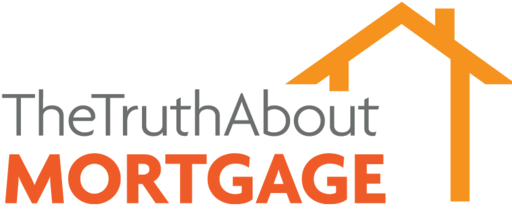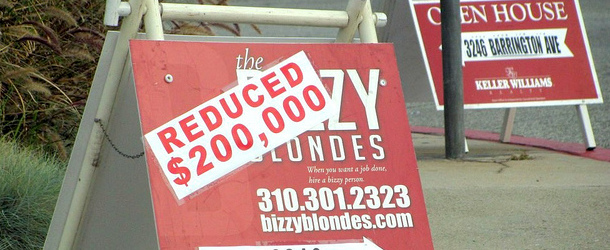A lot of people (even industry folks) speak about HELOCs and home equity loans interchangeably.
As if they’re essentially the same thing and not even different. After all, both allow you to tap into your home equity for cash needs, and they’re often second mortgages.
But while they do share some commonalities, they’re also vastly distinct products.
One thing I thought of recently that’s critically different is that a HELOC can be turned off.
Yes, the issuing bank can close the tap on your HELOC at any time, at which you won’t be able to borrow from it anymore.
HELOCs Can Be Frozen or Reduced by the Bank
I got to thinking that now with the economy arguably on shaky ground, banks and lenders might get a little more conservative in coming years.
While layoffs seem to be rising, the unemployment rate has been fairly steady for the past year or so.
But there’s a lot of worry that job losses could accelerate, especially as AI begins to eliminate a lot of positions, whether it’s white-collar jobs or even the trades.
There’s also been the threat of a recession for years now, though it hasn’t yet materialized.
At the same time, home prices are beginning to feel the pressure, and in some markets big price drops are happening.
One potentially serious downside to a home equity line of credit (HELOC) is that it can be frozen or reduced, especially during turbulent times.
This actually took place in the early 2000s during the mortgage crisis. Homeowners with $100,000 HELOCs had them slashed in half or frozen.
So if their balance was $25,000, they may have been frozen at $25,000. This meant the homeowner could no borrow additional money.
It’s pretty ironic because many homeowners are told to take out HELOCs so they have a lifeline. Meanwhile, when you finally might need it, it disappears. Go figure!
The reason is a HELOC operates as a line of credit, similar to a credit card. Just as credit card issuers can reduce your credit limit, banks can reduce your HELOC limit.
This differs from a home equity loan, in which you receive a lump sum amount at closing and it’s yours from day one.
That means even if you run into trouble, or your home value declines, that money remains yours. It’s already in your bank account.
Reasons a Bank Can Freeze or Reduce Your HELOC Limit
There are basically three main reasons a bank can freeze or reduce your HELOC limit, all governed by Regulation Z.
The most obvious is if you default on the loan, aka miss a payment and don’t rectify the situation.
Your HELOC limit can also be reduced or frozen if the creditor has a “reasonable belief” you’ll be unable to make future payments, perhaps due to a job loss or big credit score drop.
For example, if you start missing payments on other debt obligations, the HELOC provider could take notice and freeze your line.
Now your expected lifeline to keep paying those other debts is effectively shut off and you’ll need to arrange different plans.
Finally, a HELOC can be reduced or frozen if your property value experiences a “significant decline.”
This is defined as a fifty percent decline between the credit limit and the available equity.
For example, imagine your property was appraised for $500,000 and you took out a $100,000 HELOC a couple years after obtaining a $300,000 first mortgage.
You never used it, but kept it open as an emergency line just in case.
The total between the loans is $400,000, or 80% LTV. That means there’s $100,000 in available equity.
Read on: HELOC vs. home equity loan vs. cash-out refinance
But if the home’s value drops to say $450,000, it meets the 50% significant decline definition and the creditor can freeze the HELOC.
So much for that lifeline now…
Note that the lender must notify you of any reduction or freeze with three days of the action and provide a reason.
You Could Opt for a Home Equity Loan Instead
To get around this possible inconvenience, you could choose a home equity loan instead.
As noted, you get the full lump sum requested at closing, meaning there’s no turning it off or taking it back.
But here’s the problem. You might not actually need all the funds from the home equity loan. Perhaps you just want that line available if/when necessary, similar to a credit card.
The issue is you’ll likely be charged an origination fee based on the full loan amount of the loan. So say it’s a 2% fee on a $100,000 loan amount.
That’s $2,000 for a loan you don’t even need. On top of that, it accrues interest as well unless you pay it all back.
This is a key distinction between the two types of home equity products that you should be aware of when comparing and contrasting.
Ultimately, you’ll want to have a good reason to take out a home equity loan given the costs involved.
Meanwhile, a HELOC is often closing cost-free and only accrues interest when you use it. Just know it could be taken from you at the exact moment you finally need it.
- Decision to Buy Down Mortgage Comes Down to Future Mortgage Rates - January 8, 2026
- Weak ADP Jobs Report Sends Mortgage Rates Even Closer to the 5s - January 7, 2026
- Mortgage Rates Are Now Being Advertised Well Below the National Average - January 6, 2026

